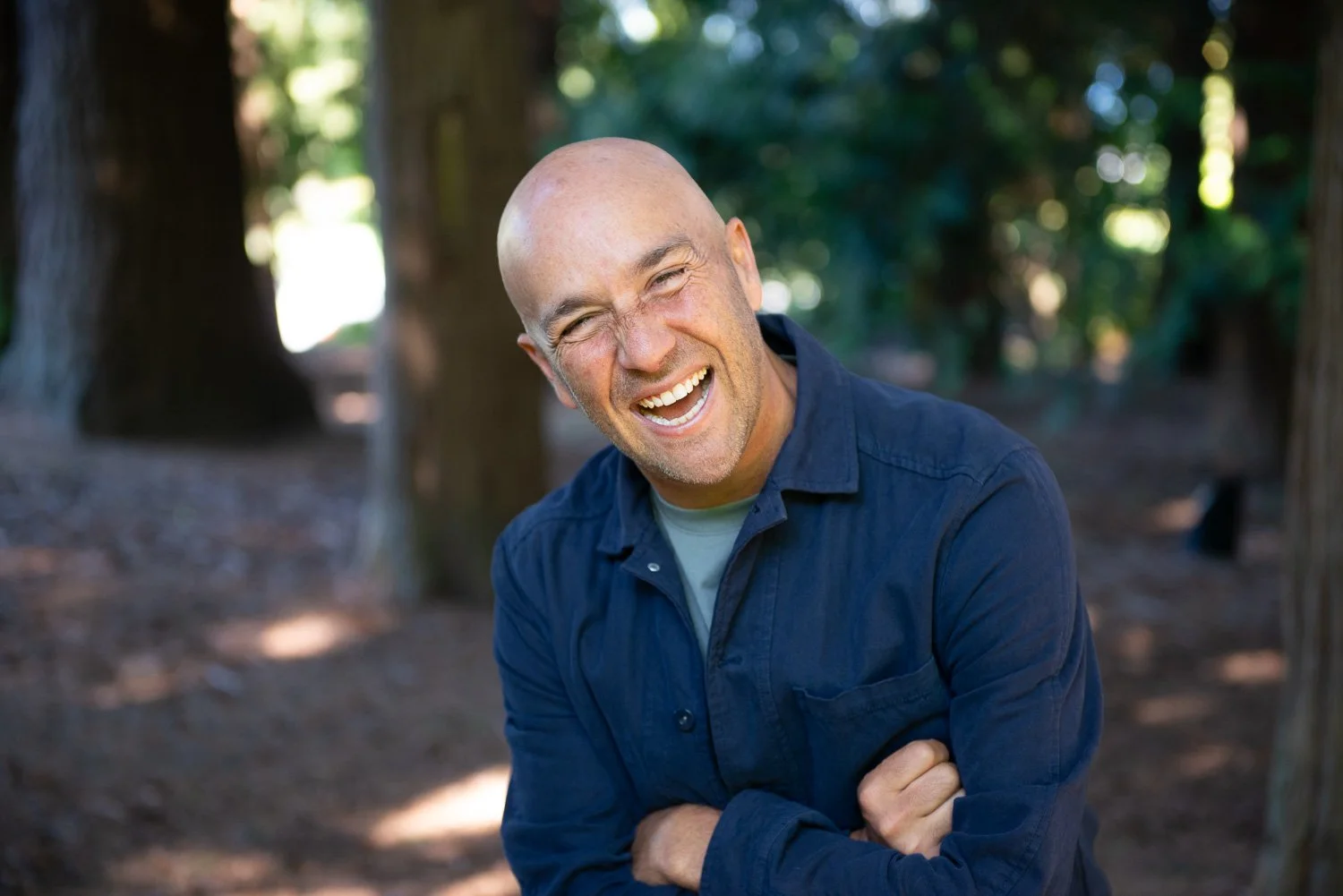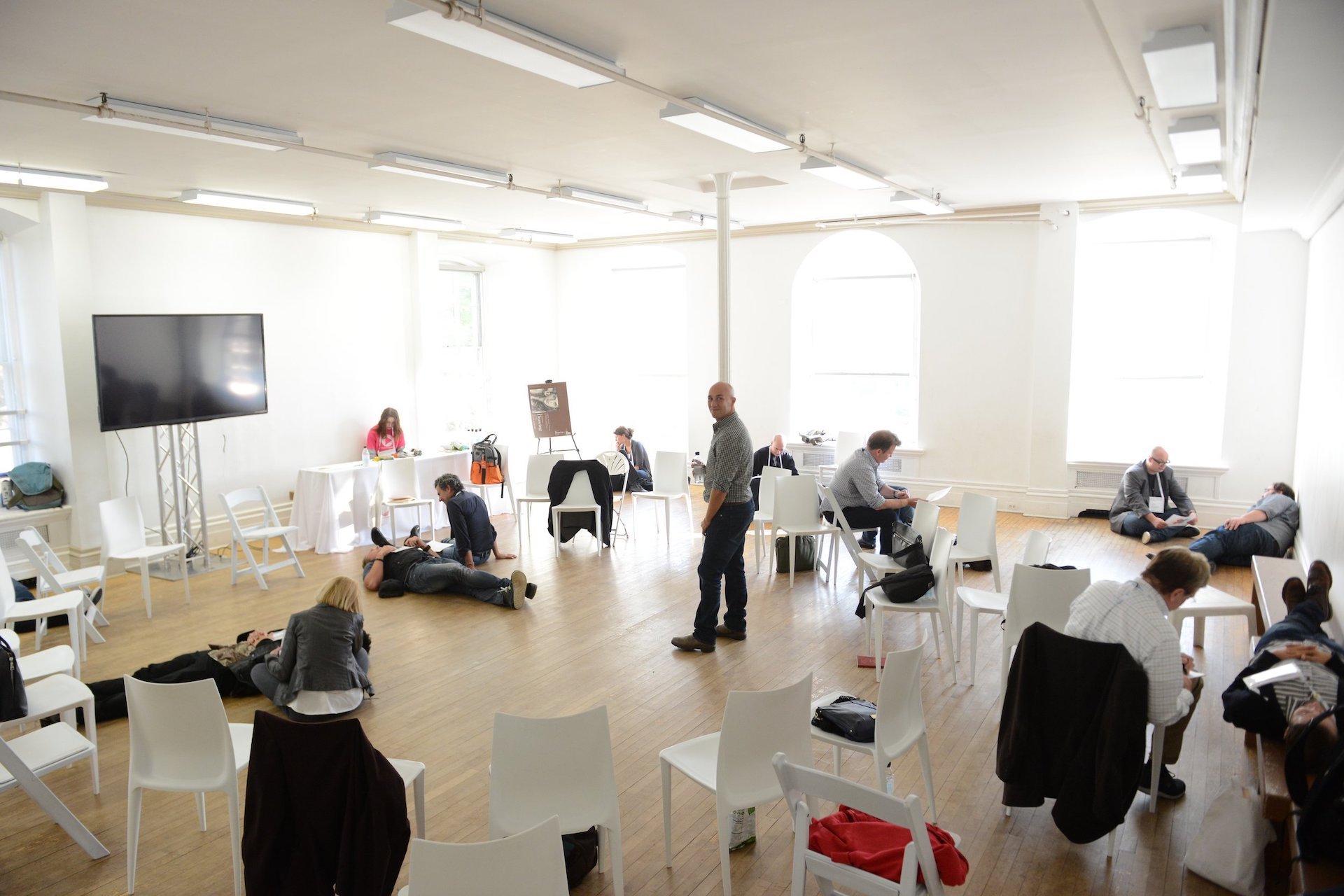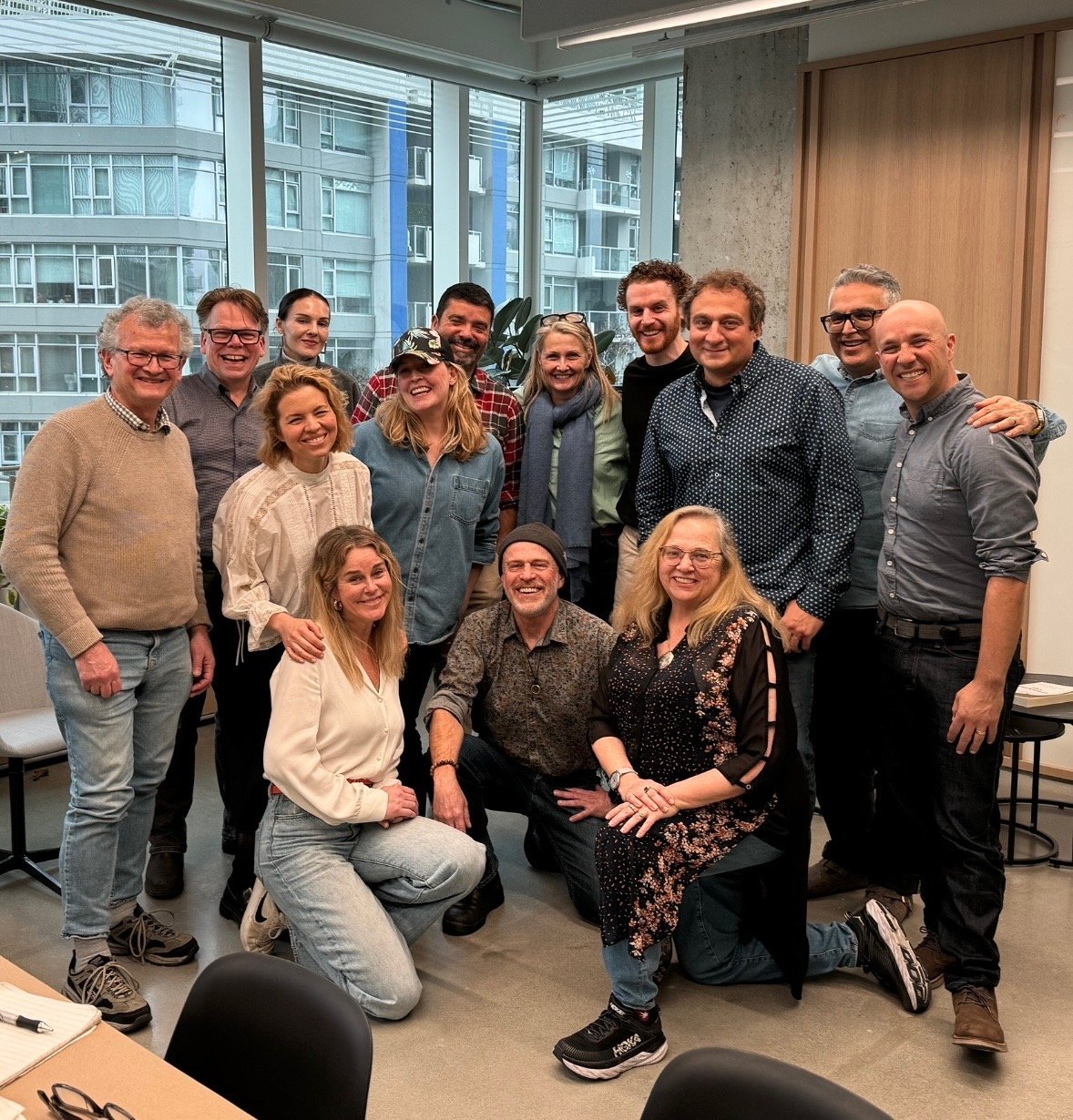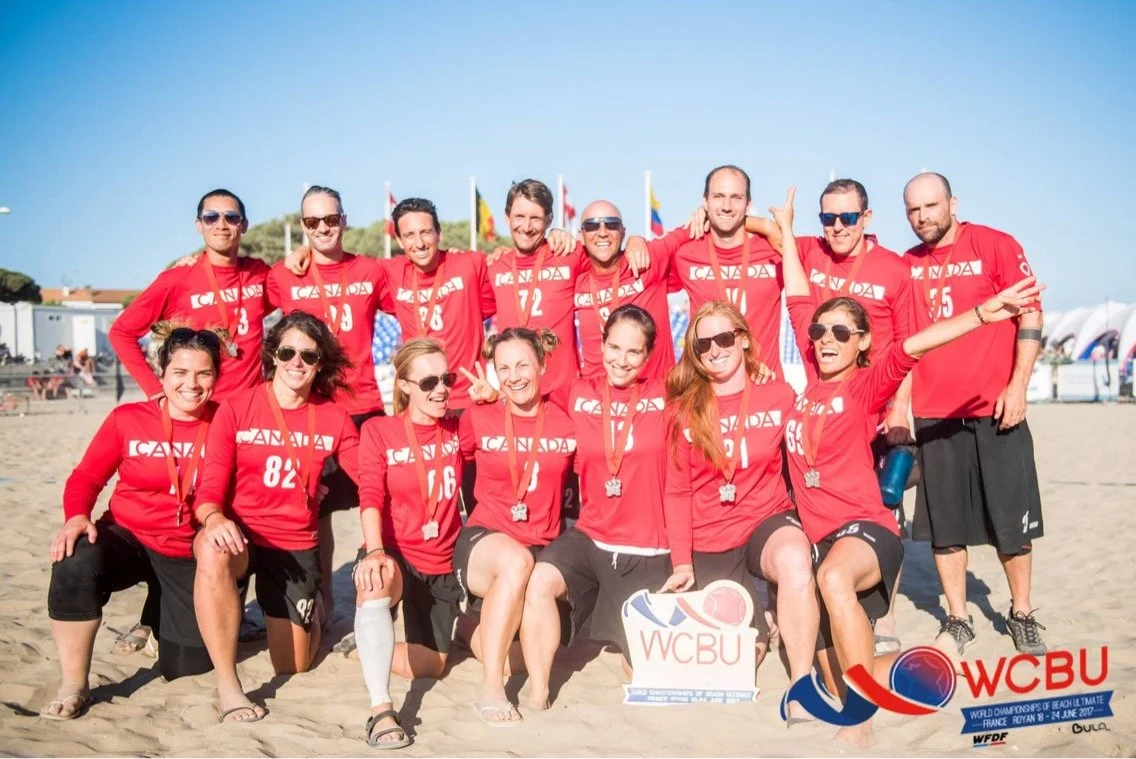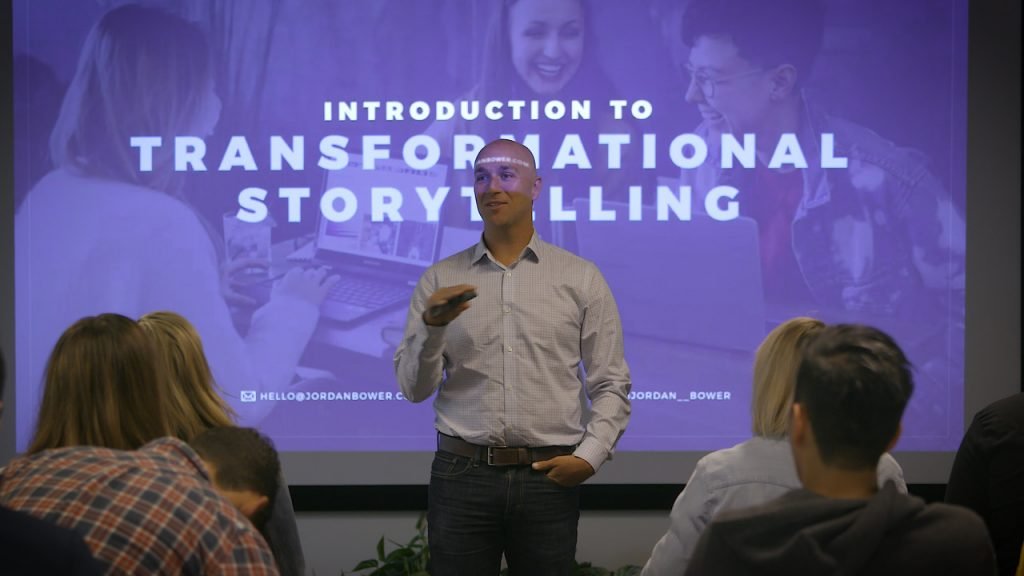Meet Jordan Bower
The Future of Work is Creativity.
Remove obstacles to change. Become more flexible and connected. Find solutions where there were once only problems. All this and more — Jordan Bower can help!
Leadership Storytelling and Future of Work Expert.
Facilitator, Coach, Keynote Speaker and Advisor.
When companies want to step outside the box to improve connection, trust, flexibility, and innovation, they reach out to JORDAN BOWER. Jordan is a renowned speaker, coach, facilitator and leadership advisor who has worked with executive and functional teams across large-scale corporate, and small-to-medium-sized organizations.
Through his talks, workshops, coaching, and transformational engagements, Jordan’s work takes his clients beyond the surface of today’s trendiest buzzwords. He shows them that the Future of Work is about much more than a tech stack — it’s also about new ways of seeing, being and leading that can create tangible business outcomes, like resilience and innovation, while significantly lowering the resistance to change.
As an accomplished writer, artist, and storyteller, Jordan loves to work at the intersection between worlds. More than communicating a groundbreaking idea, Jordan’s motivation is to guide people through meaningful, lasting and evolutionary change — a skillset that is more important today than ever.
Jordan’s unconventional career began with six years of independent travel around the world. This life-changing personal journey laid the foundation for the creative experimentation, open-mindedness, and human connection skills that would become his hallmark.
In 2013, Jordan founded Transformational Storytelling, a boutique leadership development business, and quickly began to acquire clients who were eager to train their leaders in soft skills like engagement, creativity, and authenticity. Jordan delivered leadership storytelling workshops to more than 200 organizational clients, working with teams including execs, sales, marketing, product, ops and beyond.
Jordan saw the pandemic as an opportunity to reinvent himself once again. With travel curtailed, he tore his business down to the studs and leaned into the uncertainty and fear that always comes with leadership reimagination. This process allowed him to expand his offering in ways he’d never previously imagined.
Jordan is based in Vancouver, Canada, where he lives with his wife, Maux, and their fur baby, Juno. He works with clients in Canada, America, and around the world.
Why Book Jordan
15+ Years of Transformational Leadership
When Jordan went out on his own, the iPhone was still a toddler — and “storytelling” was on the verge of becoming the biggest buzzword in business. Sensing a need, Jordan founded a business called Transformational Storytelling. Everyone, including his mother, thought he was crazy. Handling everything from strategy to sales, marketing to content design, Jordan’s vision and creativity connected with a broad swath of organizational clients. Starting with small local businesses, Jordan quickly expanded his storytelling trainings to reach Fortune 500 corporates and tech start-ups in San Francisco, New York, Toronto, Vancouver, Paris, London, Bangkok and Kuala Lumpur. As his business evolved, so did his own approach, content and thinking. Time after time, Jordan tore down his content to the studs so he could rebuild it in ways that suited the shifting needs of his audience. It was this insight into business as an ongoing evolution that has inspired his work today.
Committed to Individualized Change
Jordan knows that change can only come from connection, not convincing. You can have the smartest idea in the world, but it won’t matter unless people can feel you and trust you. That’s why every time Jordan works with a group, team or individual, he approaches the work with a beginner’s mindset. Jordan treats people with the same level of humility and respect, from the most senior person in the room to the most junior. He knows that the spark of insight can and often does come from anywhere. He embodies the art and skill of facilitation, not just in his message but also in the way that he shows up in his work. Vulnerability, authenticity and storytelling are not just buzzwords to him — they are foundational emotional principles in how he runs his business, spreads his insight and lives his life. That’s why so many diverse teams love working with him: from execs to sales, marketing, product, data, HR and beyond.
A Skilled Multi-Hyphenate
Jordan understands that leadership is a holistic act that calls upon many aspects of a person’s abilities — including body, emotional and creative intelligence as much as conventional analytical IQ. In his work, he draws upon his experiences as an international-level athlete. (Jordan has two silver medals from the World Championship of Ultimate Frisbee.) He is a photographer, a storyteller, a dancer, a coach, a writer, a web designer, a systems thinker… Jordan’s superpower is in bringing diverse worlds together. This diverse perspective allows him to help specialized thinkers broaden their perspective, and translate their ideas and messages so they can be understood by others outside their siloes. Jordan incorporates his diverse background into his keynotes and presentations, creating experiential and immersive environments that create the psychological safety for teams to engage in the important, necessary conversations that drive their business forward.
Direct Experience with Transformation
Jordan knows that change is not theoretical. Like it or not, it can’t ever be managed — that’s why it must be inspired and motivated from an emotional perspective, not a logical one. He learned this directly, in his early 30s, when he spent a year on his own walking across America. (Yes, there was a breakup involved.) On this life-changing trip, Jordan was humbled by the people he met and by the vastness of the natural landscape. He learned how to say “I don’t know”, how to ask for help, and how to trust in his own deeper inner knowing. Though the days of his wild beard are long gone, Jordan continues to draw upon the insights and lessons of this journey. His passion for sharing what he learned with others continues to be a driving force behind his work. Jordan sees business leadership as a soulful, spiritual practice, and he is eager to inspire leaders to connect with this natural source of creativity and motivation that lies inside of all of us.
Future Of Work
Human Connection
Business Storytelling
Leadership Creativity
Authenticity
Future Of Work Human Connection Business Storytelling Leadership Creativity Authenticity
🎙️ Creating Connection
Podcast: Sell True with Damien Woodfull (Ep. 14, Feb 22, 2024)
Summary: Jordan explores how to build authentic connection within high-performing teams — even under pressure. Topics include embracing uncertainty, cultivating adaptability, navigating personal growth, and leading with purpose in modern sales and workplace culture.
selected podcast interviews
🎙️ Rethinking Facilitation
Podcast: Workshops Work with Myriam Hadnes (Ep. 150, Feb 1, 2022)
Summary: Jordan and Myriam explore how facilitation can function as a kind of corporate therapy — surfacing emotion, navigating unspoken dynamics, and building trust in teams. Jordan introduces the concept of “accidental facilitators” and reflects on why presence, emotional safety, and relational intelligence matter more than any facilitation tool.
🎙️ How Stories Truly Connect Us As Humans
Podcast: Business of Story with Park Howell (Ep. 94)
Summary: Jordan reflects on the deeper purpose of storytelling — not just to persuade, but to create real human connection. Drawing on his Four Pillars of Storytelling and lessons from his West Coast walk, he shares how emotionally honest narratives foster trust and cut through today’s performative noise.

